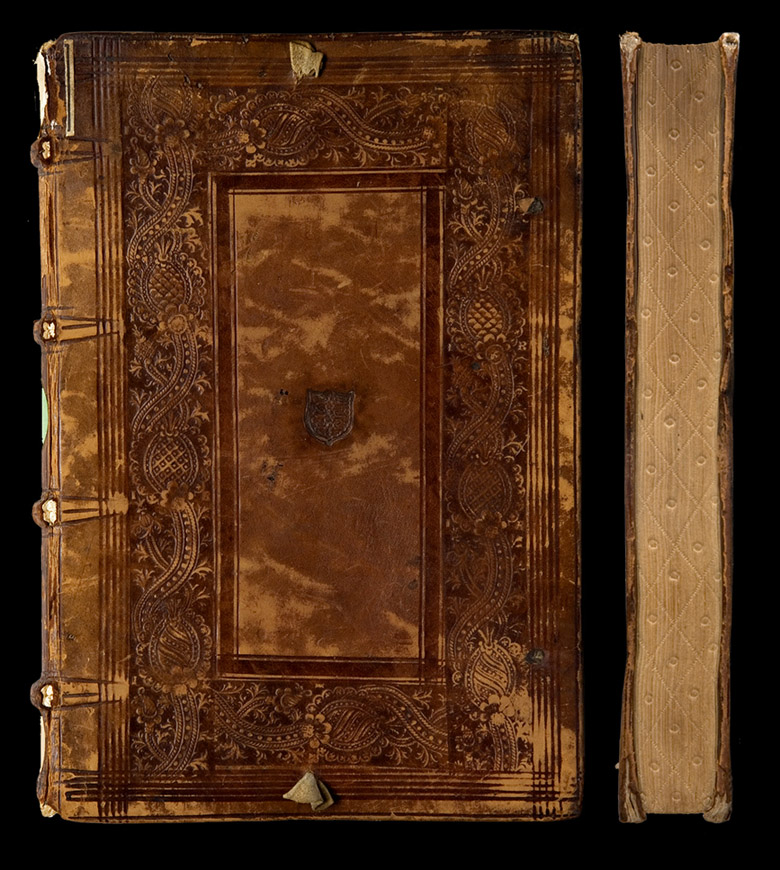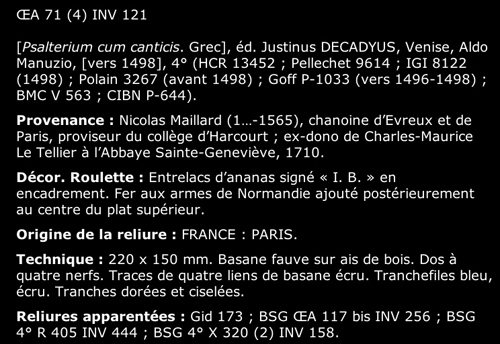The binding shown above is found in the online digital collection of BIBLIOTHEQUE SAINTE-GENEVIEVE (12th -18th CENTURIES).This database is devoted to the description and the reproduction of blind-tooled bookbindings in the collections of the Bibliothèque Sainte-Geneviève. I have chosen this binding as the first from the Atelier "I B" for a number of reasons, although it may not be the actual first example of a binding with a signed I B AEa 1 ananas entrelaces roulette from this workshop. The multiple filets that create an outer frame on the boards may however be a sign of an early binding. This kind frame was being used well before the common use of rolls, roulettes, (see the first example from the atelier of Louis XII). We note also in the data given by the BSG, that this particular binding was owned by Nicolas Maillard, this is not the only example from this bindery that was owned by Maillard who also edited a number of books printed in the early part of the 16th century. Within this binding is found a 1498 Aldus publication (Greek Psalter) , and although this binding could have been made anytime after that date, it was probably not made in the 15th century. Columbus may have brought pineapples back to Spain in 1493 however we do not find representations of them in anywhere except for this roll. If you had never seen the plant or even if you had this roll would still appear a rather mysterious representation, however there can be no doubt that it represents pineapples in various stages of preparation.
Let us digress for a minute..."The first encounter between a European and a pineapple occurred in November, 1493, when Christopher Columbus, on his second voyage to the Caribbean region, lowered anchor in a cove off the lush, volcanic island of Guadaloupe and went ashore to inspect a deserted Carib village." Columbus did not get back to Spain from this second voyage until July 1496, and I bet he was not carrying pineapples that he found in Guadaloupe over two years previously. I suspect that it was not Columbus who introduced the pineapple to Europe, and that he did not present any to the Spanish Courts. Where and when did they reach Europe? (See this page for more information.)
|


